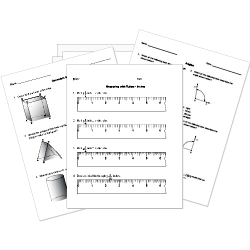Reactivity of Elements
Reactivity of Elements
This lesson aligns with NGSS PS1.A
Introduction
Reactivity is a quantitative measure of how easily an element will combine with other elements to form compounds. Chemical reactivity occurs when a substance undergoes a chemical reaction. The reactivity series of elements is significant in determining whether an element has the capability to displace another in a single displacement reaction. This series provides insights into the reactivity of metals with water and acids, as well as their ability to form compounds. In this article, we will delve into the reactivity series of elements such as metals, non-metals, and properties of reactivity series.
Reactivity Series
The periodic table categorizes elements into two primary groups: metals and non-metals. The arrangement of these elements in the table is based on their respective atomic numbers, irrespective of their level of reactivity. However, in a reactivity series, these elements are organized in a descending order based on their reactivity.
Reactivity Series of Elements
Metals: for instance, always tend to lose electrons to form positive ions called cations, for example, Na+, Mg+, etc. A metal is considered highly reactive if its atoms readily lose electrons at room temperature. If the atom readily loses electrons at room temperature, it is said to be a highly reactive metal.
Non-metals: Non-metals typically gain or share electrons leading to the formation of negative ions called anions, e.g. (Cl-, So-2 )The reactivity of a non-metal is determined by its tendency to gain electrons; a higher reactivity corresponds to a greater tendency to gain electrons, and vice versa.
Reactivity Series of Metals
- Metals positioned at top of the reactivity series are characterized as highly electropositive. As we progress down the reactivity series, the electropositivity of metals decreases.
- The electropositivity of elements similarly reduces when descending the reactivity series of metals.
- All metals situated above hydrogen in the activity series exhibit the capability to release H2 gas when reacting with dilute H2S04 or diluted HCl.
- The reducing ability of metals weakens as we move down the series.
- Metals occupying higher positions in the reactivity series possess the capacity to displace metals located lower in the series from their salt solutions.
- Metals with higher rankings need greater amounts of energy for extraction from ores and other compounds.

Reactivity Series of Non-Metals
The reactivity series of non-metals is a sequence where non-metals are organized in decreasing order according to their chemical activity.
Similar to metals, non-metals can be organized based on their reactivity. In displacement reactions, a more reactive non-metal displaces a less reactive non-metal from a compound. The reactivity of a non-metal depends upon its ability to add electrons in the solution state, resulting in the production of positive ions. The higher the ease with which a non-metal gains electrons, the more active it is, and it holds a higher position in the reactivity series.
Properties of Reactivity Series
The result of the reactions between metals and water, metals and acids, and single displacement reactions between metals can be predicted with the help of the activity series.
Reaction Between Metals and Water
Calcium and metals positioned higher in the reactivity series than calcium have the capability to undergo reactions with cold water, resulting in the formation of the corresponding hydroxide along with the release of hydrogen gas. An illustrative example is the reaction between potassium and water, expressed by the chemical equation:
Consequently, the reactivity series of metals serves to predict the reaction between metals and water.
Reaction Between Metals and Acids
Lead and metals positioned higher than lead in the activity series form salts when subjected to reaction with hydrochloric acid or sulfuric acid. These reactions involve the release of hydrogen gas. An example of such a reaction is the interaction between zinc and sulfuric acid, yielding zinc sulphate and H2 gas as products. The chemical representation of this reaction is given by the equation:
Consequently, the ability to predict reactions between metals and certain acids is facilitated by the reactivity series.
Single Displacement Reactions Between Metals
The ions associated with metals of lower rank on the reactivity series are readily reduced by metals of higher rank. Consequently, in single displacement reactions between these metals, those of lower rank are easily displaced by high-ranking metals.
An illustrative instance of such a reaction is the displacement of copper from copper sulphate by zinc. The corresponding chemical equation is represented as:
This concept finds practical application in various metal extraction processes. For instance, the extraction of titanium from titanium tetrachloride involves a single displacement reaction with magnesium. Thus, the reactivity series of metals serves as a tool to predict the outcomes of single displacement reactions.
Summary
- Reactivity is a quantitative measure of how easily an element will combine with other elements to form compounds.
- Metals always tend to lose electrons to form positive ions called cations, for example, Na+, Mg+, etc.
- A metal is considered highly reactive if its atoms readily lose electrons at room temperature.
- Non-metals typically gain or share electrons leading to the formation of negative ions called anions, e.g. (Cl-, So-2 ).
- The reactivity of a non-metal is determined by its tendency to gain electrons.
Related Worksheets:













